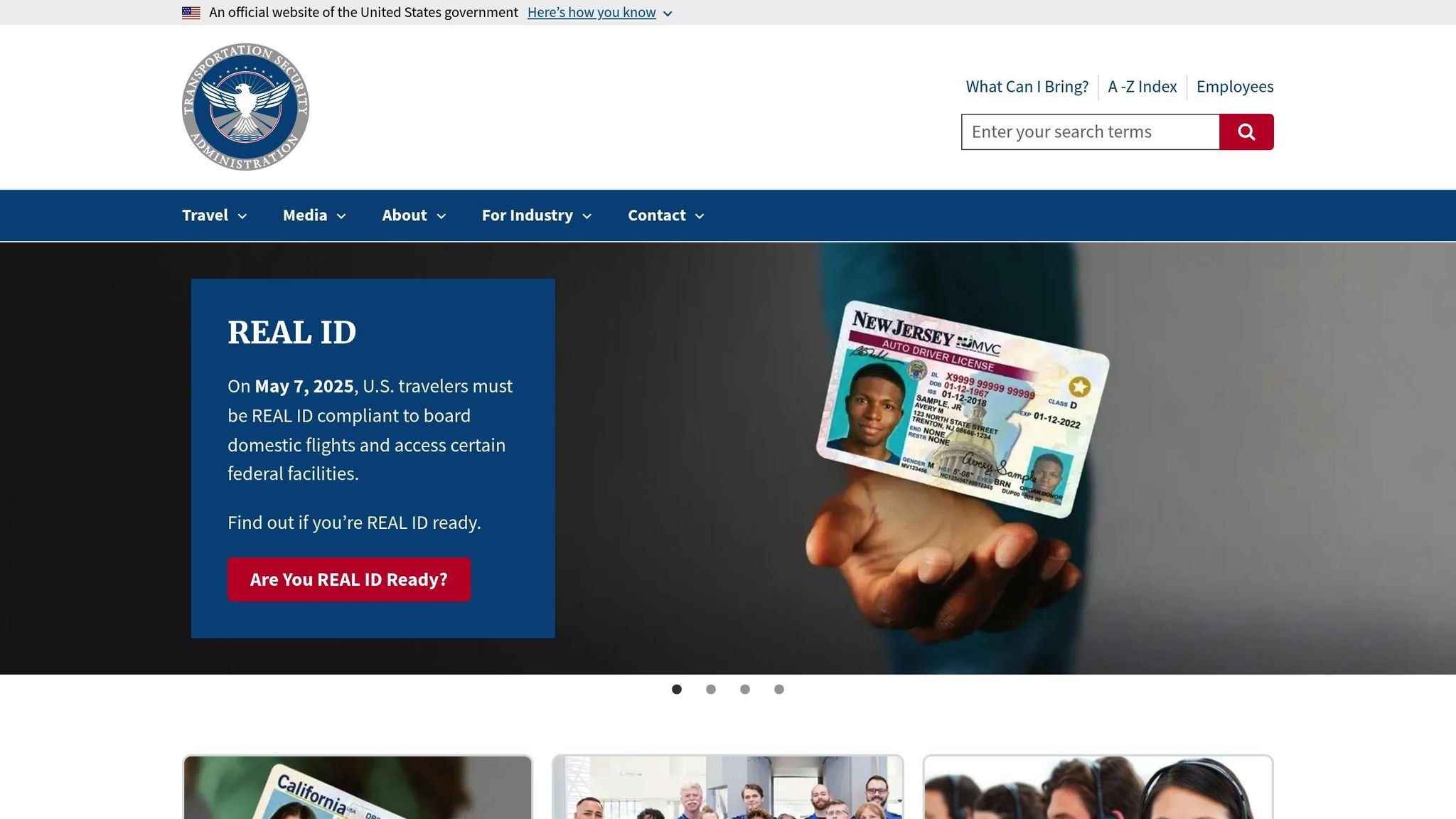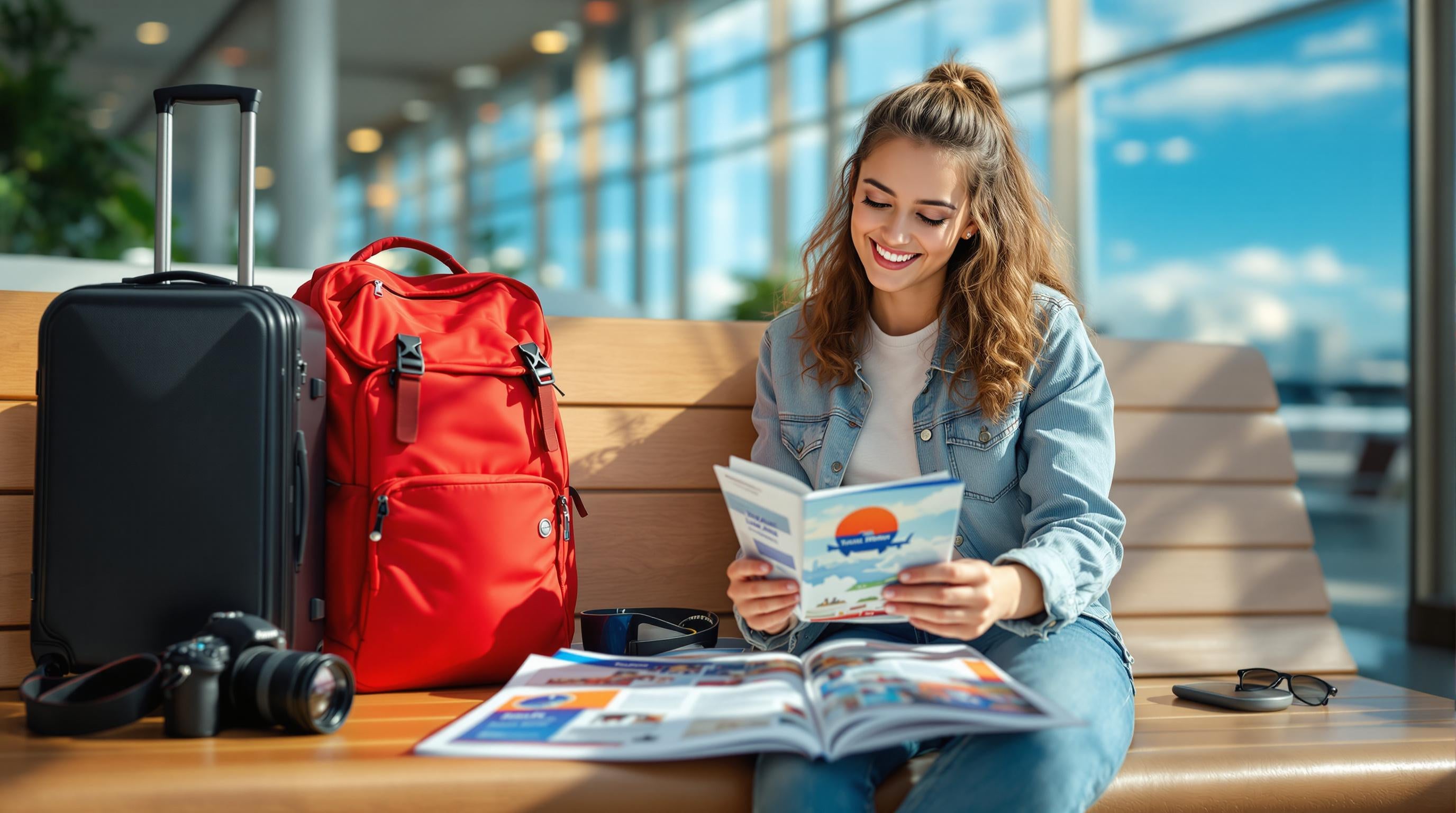Losing or damaging your travel gear can be stressful, but travel insurance offers protection. Here's a quick breakdown of what it typically covers and how to safeguard your belongings:
- Lost Luggage Coverage: Reimburses you for permanently lost or stolen checked bags, based on the current value of items.
- Delayed Baggage Protection: Covers essential purchases when your luggage is delayed for a specific period.
- Personal Item Coverage: Protects carry-ons, electronics, and other valuables, often with per-item limits.
- High-Value Item Options: Additional coverage for expensive gear like laptops or cameras.
Coverage Limits:
- Standard plans: $2,000–$3,000 per person, with per-item limits of $250–$500.
- Premium plans: Up to $5,000 total or more with supplemental coverage.
How to File a Claim:
- Report the issue to your insurer immediately.
- Submit required documents (receipts, reports, etc.).
- Complete claim forms accurately.
Extra Tips:
- Use TSA-approved locks and anti-theft luggage.
- Pack valuables in your carry-on.
- Invest in durable, secure travel gear like waterproof backpacks.
Travel insurance helps protect your finances, but combining it with smart packing and quality gear minimizes risks and ensures peace of mind.
What Is Baggage Insurance? - InsuranceGuide360.com
Travel Insurance Coverage Types for Lost Gear
Travel insurance policies often include several options to protect your belongings during your trip. Knowing the differences between these coverage types can help you choose the right protection for your gear. Here's a breakdown of the main types:
Lost Luggage Coverage
If your checked bags are permanently lost or stolen while in transit, many travel insurance plans offer compensation. The reimbursement is typically based on the current value of your items, not the original purchase price. Check your policy for specific coverage limits.
To file a claim, you'll usually need receipts, an itemized list of the lost items, and official incident reports. The exact documentation required may vary depending on the insurer.
Delayed Baggage Protection
When your luggage is delayed, this coverage helps cover the cost of essential items you need while waiting for your bags. The amount reimbursed depends on the policy, and coverage usually kicks in after a specific delay period. Keep all receipts for purchases made during this time, as they are generally required for claims.
Personal Item Coverage
This type of coverage protects items you carry with you, whether in a carry-on or checked luggage. It often includes electronics, cameras, and other travel gear, and extends throughout your trip. Most policies reimburse the current value of items and may impose limits on high-value belongings. If you have expensive or specialized gear, some policies allow you to list these items individually for extra protection under scheduled personal property coverage.
To minimize risks, consider gear with built-in safety features like TSA-approved locks, waterproof materials, or reinforced designs. For example, Titantrek (https://titantrekstore.com) offers durable, thoughtfully crafted gear designed to keep your essentials safe during travel.
Coverage Limits and Exclusions
Standard Coverage Limits
Most insurance policies cover expenses up to $2,000–$3,000 per person, with premium plans extending coverage to $5,000. However, per-item limits often range between $250–$500, which means a high-priced item like a $1,500 laptop may only be partially reimbursed unless you purchase extra coverage. Older items may also receive reduced reimbursement. To ensure full protection for your belongings, consider exploring additional coverage options.
High-Value Item Limits
If you own expensive items like cameras, laptops, or other specialized equipment, standard coverage may fall short. Many insurers offer additional options to address this gap, including:
- Scheduled Personal Property Coverage: Allows you to list high-value items and insure them based on their documented worth.
- Equipment Protection Riders: Designed to cover professional or specialized gear.
- Excess Valuation Coverage: Increases overall policy limits beyond the standard maximum.
| Coverage Type | Typical Limit | Supplemental Coverage |
|---|---|---|
| Base Coverage | $2,000–$3,000 | Up to $5,000 |
| Per-Item Limit | $250–$500 | Varies based on item value |
| Electronics | $500–$1,000 | Up to full replacement value |
| Specialized Equipment | $1,000 | Based on documented worth |
sbb-itb-b1567d8
Filing an Insurance Claim
Before filing an insurance claim, check your insurer's specific requirements and documentation guidelines. Commonly needed items include:
- Purchase receipts
- Official reports, such as an airline Property Irregularity Report or a police report
- Travel documents
- A copy of your travel insurance policy
Here’s how to file your claim:
- Contact your insurance provider right away to report the issue.
- Gather all required documents to support your claim.
- Fill out the claim forms accurately, ensuring all details are correct.
- Submit your claim and keep copies of every document for your records.
Processing times can differ between providers, so respond quickly if they request more information. Up next, discover ways to safeguard your gear and reduce the chances of needing to file a claim in the future.
Gear Protection Methods
Taking steps to protect your belongings can help reduce the chances of loss or damage while traveling. Here are some practical ways to keep your gear safe and secure.
Using TSA-Approved Locks

TSA-approved locks add a layer of security to your luggage while ensuring compliance with airport rules. These locks allow security agents to open and inspect your bags without breaking the lock. Look for locks with the Travel Sentry or Safe Skies logos to confirm they meet TSA standards. Combination locks are a great choice since they eliminate the need to keep track of keys.
Packing Valuables in Your Carry-On
Always pack your most important items in your carry-on bag. This includes electronics, cameras, essential documents, medications, jewelry, and a change of clothing. Choose a carry-on with anti-theft features, like hidden or lockable pockets, to keep your valuables safe and accessible during your trip.
Choosing High-Quality Travel Gear
Investing in durable and secure travel gear can go a long way in preventing loss or damage. For example, Titantrek's vacuum compression backpacks are designed with both security and practicality in mind. Users have shared positive experiences, such as:
"very good quality of materials, lots of compartments for all eventualities, very well organized, vacuum system works perfectly and the pump is powerful",
- Ahmad Harris, January 2025 review[1].
When shopping for travel gear, look for these features:
- Waterproof materials to protect against rain or spills
- Built-in security features, like TSA-approved locks
- Anti-theft pockets to store valuables securely
- Durable construction to handle the wear and tear of travel
Another traveler, Christelle O'Reilly, highlighted the practicality of quality gear, saying:
"very practical and is as is the photo! Really worth it! The same I buy another."
- Christelle O'Reilly, January 2025 review[2].
For added convenience, consider gear with specific compartments, like a laptop sleeve (up to 17"), to protect expensive electronics while keeping them accessible for security checks.
Taking these precautions not only safeguards your belongings but also complements your travel insurance by reducing the likelihood of issues during your trip.
Summary
Travel insurance can help cover lost or damaged items, but taking extra precautions is just as important. Knowing the details of your policy - like coverage limits and exclusions - ensures your belongings are properly protected.
Here are three key ways to safeguard your items:
- Insurance Coverage: Make sure your policy covers lost luggage, delayed baggage, and personal items.
- Security Features: Opt for TSA-approved locks and anti-theft storage solutions.
- Reliable Gear: Choose durable travel gear with built-in security features.
Consider the following when selecting travel gear and insurance:
| Protection Layer | What It Offers | How It Helps |
|---|---|---|
| Travel Insurance | Financial reimbursement for losses | Covers unexpected situations |
| Security Features | Helps prevent theft | Deters opportunistic thieves |
| Durable Materials | Withstands wear and tear | Minimizes damage over time |
These strategies work together to reduce risks and make recovery easier.
For example, in December 2024, Chandler Breitenberg reviewed the Titantrek Atlas Vault backpack, saying:
"Very wide and seems good material...We go a thick outer fabric that gives it more robust character. I also think it's waterproof...The padlock works well" [1].
While insurance provides financial protection, using high-quality gear with built-in security features helps prevent losses altogether. Combining both approaches ensures your belongings stay safe.

How Hybrid Fabrics Improve Travel Backpacks
Africa Carry-On Weight Standards: What to Know